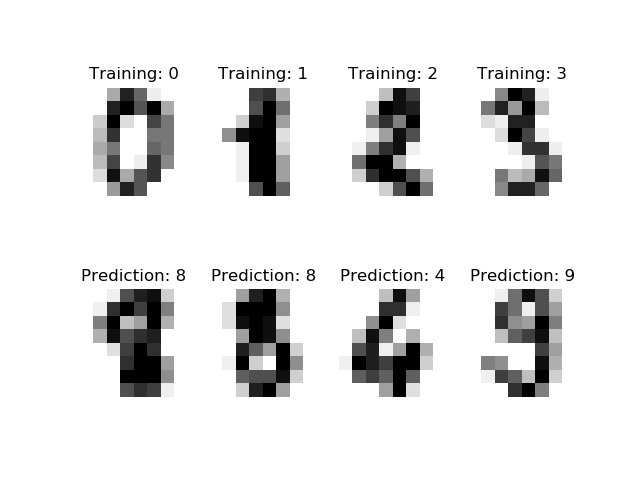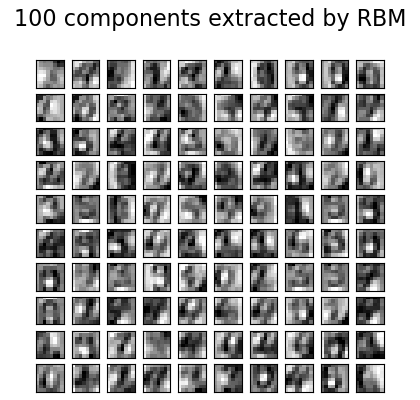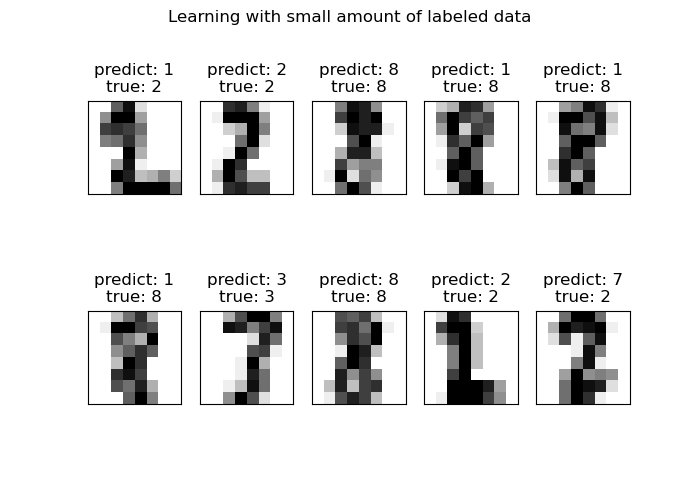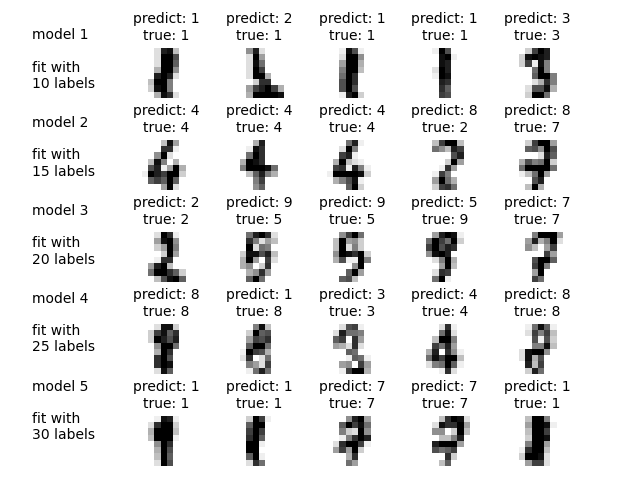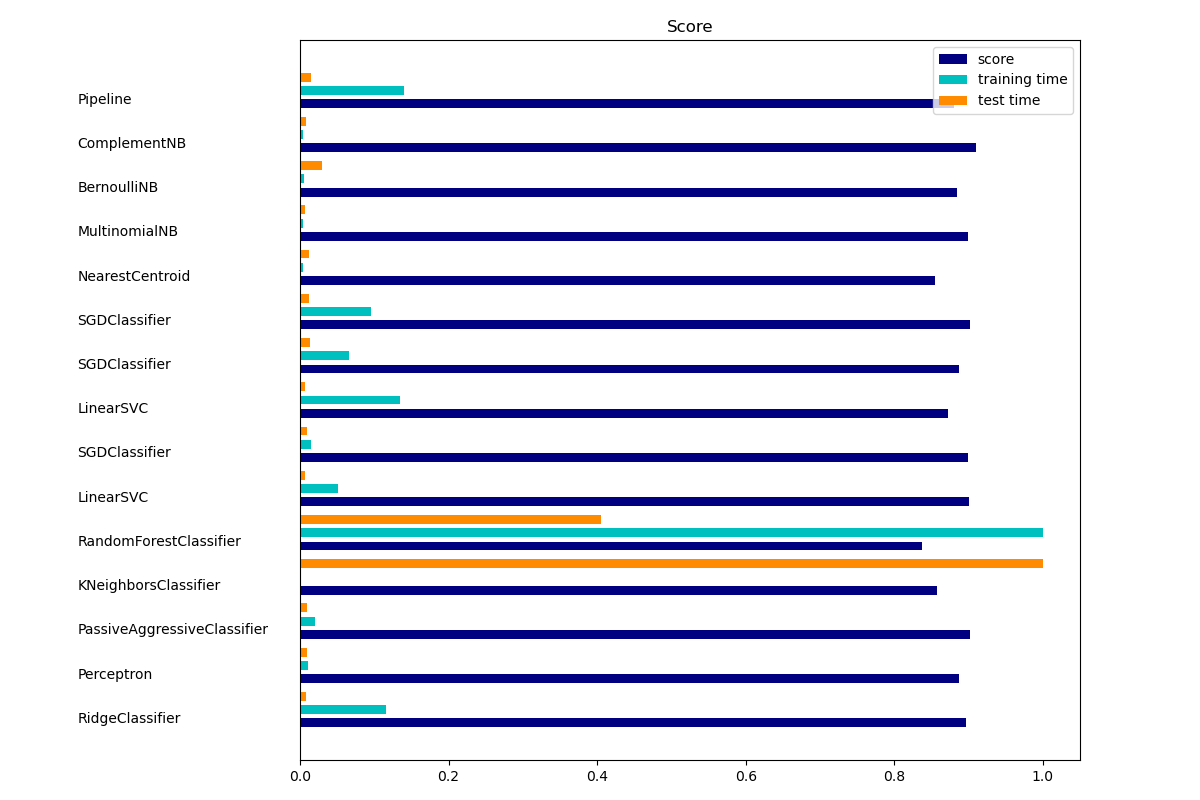sklearn.metrics.classification_report¶
sklearn.metrics.classification_report(y_true, y_pred, *, labels=None, target_names=None, sample_weight=None, digits=2, output_dict=False, zero_division='warn')
建立一个显示主要分类指标的文本报告。
在用户指南中阅读更多内容。
| 参数 | 说明 |
|---|---|
| y_true | 1d array-like, or label indicator array / sparse matrix 真实的目标值。 |
| y_pred | 1d array-like, or label indicator array / sparse matrix 分类器返回的估计目标。 |
| labels | array, shape = [n_labels] 报告中要包含的标签索引的可选列表。 |
| target_names | list of strings 与标签匹配的可选显示名称(相同顺序)。 |
| sample_weight | array-like of shape (n_samples,), default=None 样本权重。 |
| digits | int 用于格式化输出浮点值的位数。当output_dict为True时,它将被忽略,并且返回的值将不会四舍五入。 |
| output_dict | bool (default = False) 如果为True,则将输出作为dict返回。 0.20版中的新功能。 |
| zero_division | “warn”, 0 or 1, default=”warn” 设置零分频时返回的值。 如果设置为“ warn”,则该值为0,但也会发出警告。 |
| 返回值 | 说明 |
|---|---|
| report | string / dict 准确性、召回率的文字摘要,每类的F1分数。如果output_dict为True,则返回字典。字典具有以下结构: |
{'label 1': {'precision':0.5,
'recall':1.0,
'f1-score':0.67,
'support':1},
'label 2': { ... },
...
}
报告的平均值包括宏观平均值(每个标签的未加权平均值)、加权平均值(每个标签的支持度权重平均值)和样本平均值(仅适用于多标签分类)。微观平均(对总的真正例、假负例和假正例的平均值)仅针对多标签或带有类别子集的多重类别显示,否则与准确性相对应。有关平均值的更多详细信息,另请参见precision_recall_fscore_support。
请注意,在二元分类中,对正例类的召回也称为“敏感性”。负例类的召回是“特殊性”。
另见
示例
>>> from sklearn.metrics import classification_report
>>> y_true = [0, 1, 2, 2, 2]
>>> y_pred = [0, 0, 2, 2, 1]
>>> target_names = ['class 0', 'class 1', 'class 2']
>>> print(classification_report(y_true, y_pred, target_names=target_names))
precision recall f1-score support
<BLANKLINE>
class 0 0.50 1.00 0.67 1
class 1 0.00 0.00 0.00 1
class 2 1.00 0.67 0.80 3
<BLANKLINE>
accuracy 0.60 5
macro avg 0.50 0.56 0.49 5
weighted avg 0.70 0.60 0.61 5
<BLANKLINE>
>>> y_pred = [1, 1, 0]
>>> y_true = [1, 1, 1]
>>> print(classification_report(y_true, y_pred, labels=[1, 2, 3]))
precision recall f1-score support
<BLANKLINE>
1 1.00 0.67 0.80 3
2 0.00 0.00 0.00 0
3 0.00 0.00 0.00 0
<BLANKLINE>
micro avg 1.00 0.67 0.80 3
macro avg 0.33 0.22 0.27 3
weighted avg 1.00 0.67 0.80 3
<BLANKLINE>






